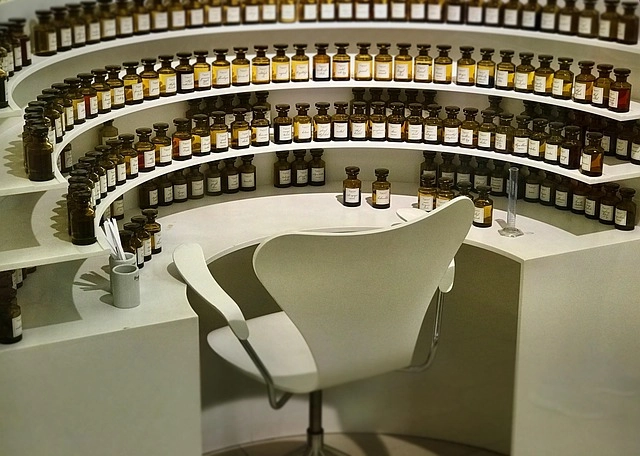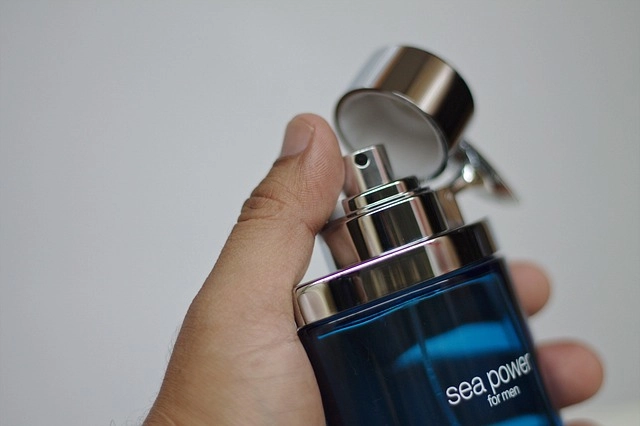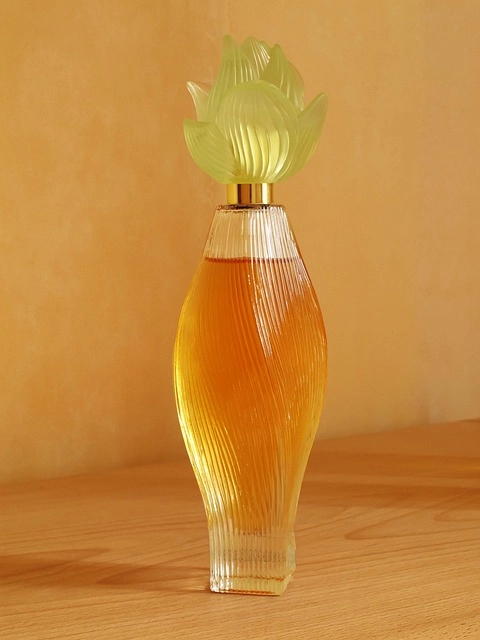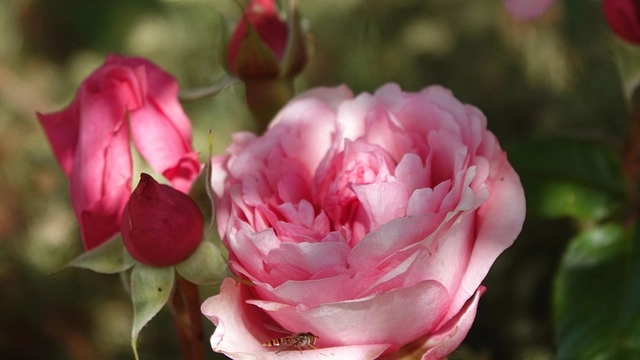Essential oils, valued for their benefits, enhance perfumes like Guy Laroche Perfume and colognes such as Guy Laroche Cologne, offering relaxation, well-being, and natural scent profiles. Health-conscious consumers prefer them over synthetic alternatives due to health and environmental concerns. Guy Laroche Perfume blends rare citrus and herb notes with synthetic duplicates for consistency. Natural essences provide organic benefits and enhanced longevity, while synthetics offer cost-effectiveness and versatility. Choosing a fragrance like Guy Laroche Perfume involves understanding ingredient composition for an informed decision based on personal taste and values.
“Unraveling the debate between essential oils and synthetic ingredients, this article guides you through the aromatic landscape. Discover the benefits and uses of natural essential oils, explore common synthetic types and their controversies, and delve into the art of perfumery. We examine the iconic Guy Laroche Perfume to uncover its ingredient secrets. Learn about health considerations and make informed choices for your scent preferences, ensuring a safe and enjoyable experience.”
- Understanding Essential Oils: Benefits and Uses
- Synthetic Ingredients: Common Types and Concerns
- Guy Laroche Perfume: A Closer Look at Its Ingredients
- Natural vs. Synthetic: Health and Safety Considerations
- The Perfumer's Art: Creating Aromatic Compositions
- Making an Informed Choice for Your Scent Preferences
Understanding Essential Oils: Benefits and Uses

Essential oils, derived from plants, have been used for centuries due to their diverse benefits. They offer a natural and aromatic way to promote relaxation, enhance well-being, and even provide therapeutic effects. When it comes to perfumes and colognes, like Guy Laroche Perfume and Guy Laroche Cologne, essential oils play a significant role in their composition. These delicate extracts capture the essence of flowers, herbs, and spices, infusing fragrances with depth and character.
The benefits of essential oils extend from providing a pleasant scent to aiding in stress relief, improving sleep quality, and boosting mood. Many people prefer using natural ingredients like essential oils over synthetic alternatives due to their purported health benefits and environmental friendliness. In the case of Guy Laroche Perfume and Cologne, understanding the role of essential oils in their formulation can provide insight into the overall user experience and appeal of these popular fragrances.
Synthetic Ingredients: Common Types and Concerns

Synthetic ingredients, often used in mass-produced fragrances like the Guy Laroche Perfume and Guy Laroche Cologne lines, have sparked a lot of discussion in recent years. Common types include synthetic fragrances, which mimic natural scents but are created in laboratories, and synthetic colors and preservatives that offer better stability and longer shelf lives compared to their natural counterparts. While they can provide cost-effectiveness and consistent quality, there are concerns about their potential health impacts and environmental effects.
Some synthetic ingredients have been linked to allergies, skin irritations, and even more severe reactions in sensitive individuals. Additionally, the release of certain chemicals into the environment raises ecological worries. As consumers become increasingly conscious of ingredient transparency, many are opting for natural alternatives, driving a shift towards essential oil-based fragrances that offer both potency and perceived safety benefits.
Guy Laroche Perfume: A Closer Look at Its Ingredients

The iconic Guy Laroche Perfume has captivated noses for decades, leaving an indelible mark on the fragrance industry. But what secrets does this fragrant masterpiece hold? A closer inspection reveals a blend of ingredients that either elevate it to a level of aromatic elegance or spark concerns about its authenticity.
At the heart of the composition lies a delicate balance between essential oils and synthetic compounds. While the exact formulation is a closely guarded secret, scent enthusiasts speculate that rare citrus notes, infused with fresh herbs, form the base. These natural extracts contribute to the invigorating opening accords of Guy Laroche Cologne, instantly transporting wearers to a vibrant, sun-drenched garden. However, the heart of the fragrance might include synthetic duplicates designed to mimic these scents, ensuring consistency in every bottle produced. This approach is not uncommon in the perfume industry, where recreating natural aromas precisely can be challenging and costly.
Natural vs. Synthetic: Health and Safety Considerations

When it comes to perfumes, understanding the difference between natural and synthetic ingredients is essential for consumers concerned about health and safety. Natural essences, derived from plants, flowers, fruits, or spices, offer a range of benefits. They are often seen as more organic and environmentally friendly, with some claiming enhanced fragrance longevity due to their complex molecular structures. On the other hand, synthetic fragrances are man-made chemical compounds created in laboratories. These ingredients are known for their cost-effectiveness and versatility, allowing perfumers to create unique scent profiles that may not be possible with natural oils alone.
In the case of luxury perfumes like Guy Laroche, a brand synonymous with sophistication, the discussion shifts towards ensuring high-quality standards. Guy Laroche Perfume, for instance, has established itself in the market by offering timeless fragrances that blend both natural and synthetic elements. While some of their scents may feature essential oils, like citrus or floral extracts, they also employ synthetic compounds to create intricate, signature aromas. This balance allows for a seamless fusion of luxury and accessibility, appealing to diverse consumer preferences while maintaining health and safety standards, as seen with Guy Laroche Cologne products.
The Perfumer's Art: Creating Aromatic Compositions

The art of perfumery is a captivating journey into the world of aromas, where skilled artisans, known as perfumers, craft scents that tell stories and evoke emotions. It’s an intricate process that involves a delicate balance between natural essences and synthetic compounds to create unique fragrance profiles. At its core, this ancient practice requires a deep understanding of ingredients, their interactions, and how they evolve over time.
One such renowned perfumer is Guy Laroche, who has left an indelible mark on the industry with his exquisite fragrances. The Guy Laroche perfume line showcases the master’s ability to blend both essential oils extracted from rare floral notes and synthetic ingredients to design captivating scents. For instance, their iconic Guy Laroche Cologne blends citrusy top notes with a heart of lavender and base notes of amber, creating a harmonious composition that captivates the senses. This fine art of composition ensures that each fragrance is not merely a collection of ingredients but a meticulously crafted experience.
Making an Informed Choice for Your Scent Preferences

When choosing a fragrance, whether it’s a perfume or cologne like Guy Laroche Perfume or Guy Laroche Cologne, understanding the ingredients is essential for making an informed decision that aligns with your scent preferences. Many modern fragrances blend synthetic compounds with natural extracts to create unique and complex aromas. While synthetic ingredients offer versatility and longevity in formulation, they might not appeal to those seeking a more organic experience.
On the other hand, essential oils, derived from plants, provide a pure and natural scent profile but may have shorter-lasting notes due to their concentration. Opting for a fragrance with essential oils can be ideal for individuals who prioritize natural ingredients and want a scent that evolves with time. Comparing product labels and understanding ingredient lists is key to selecting the perfect aroma, ensuring it resonates with your personal taste and aligns with your values regarding synthetic versus natural components.
